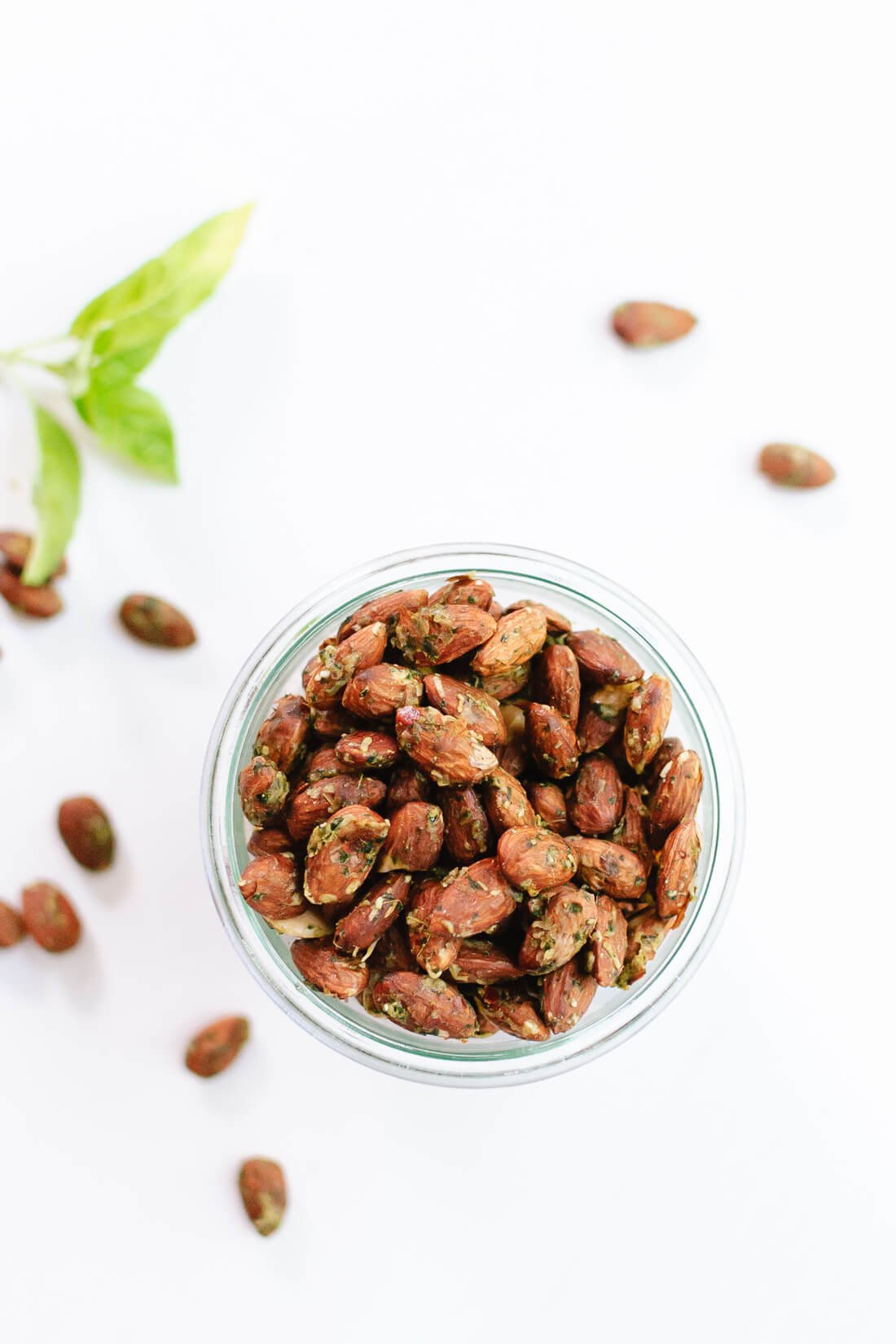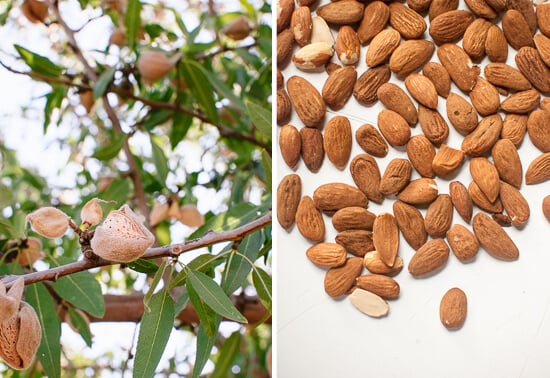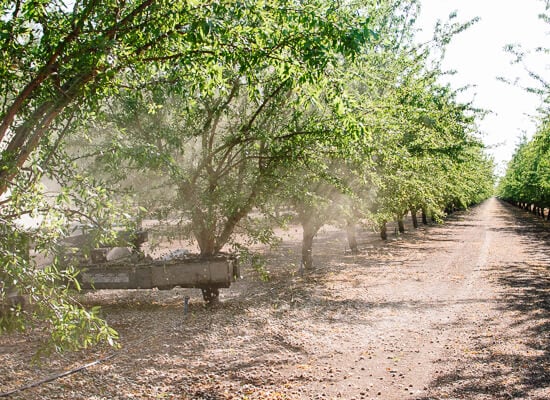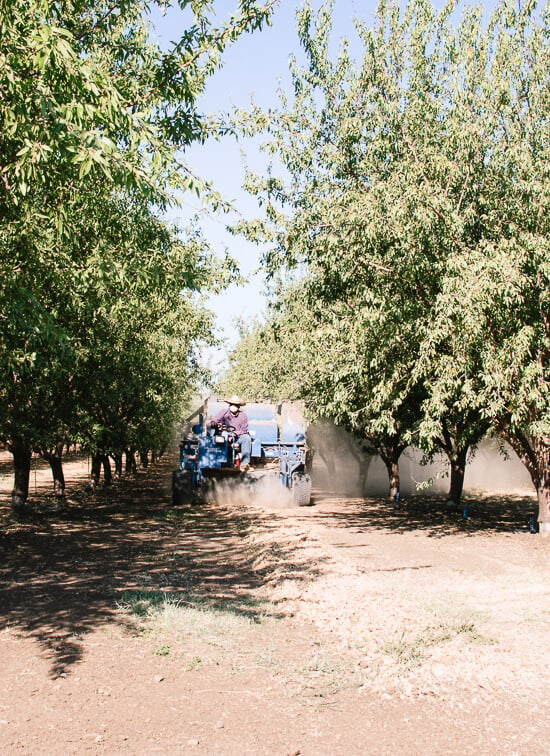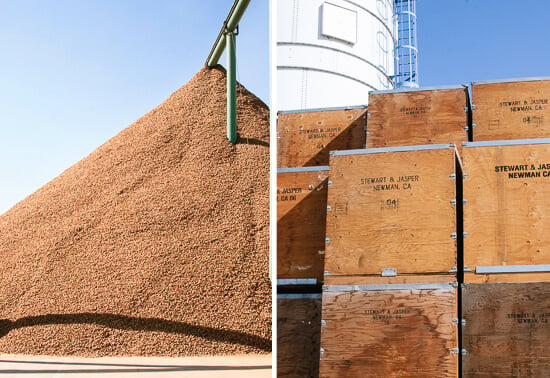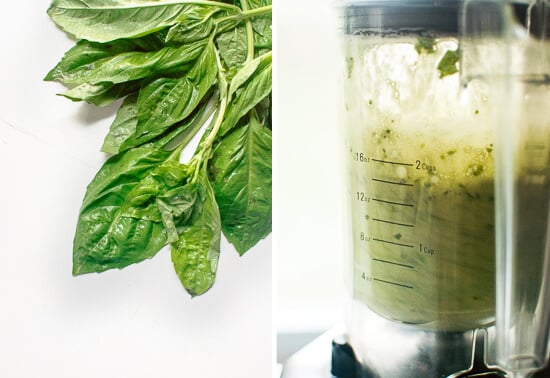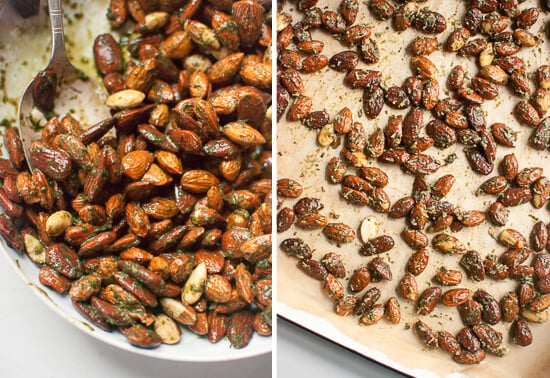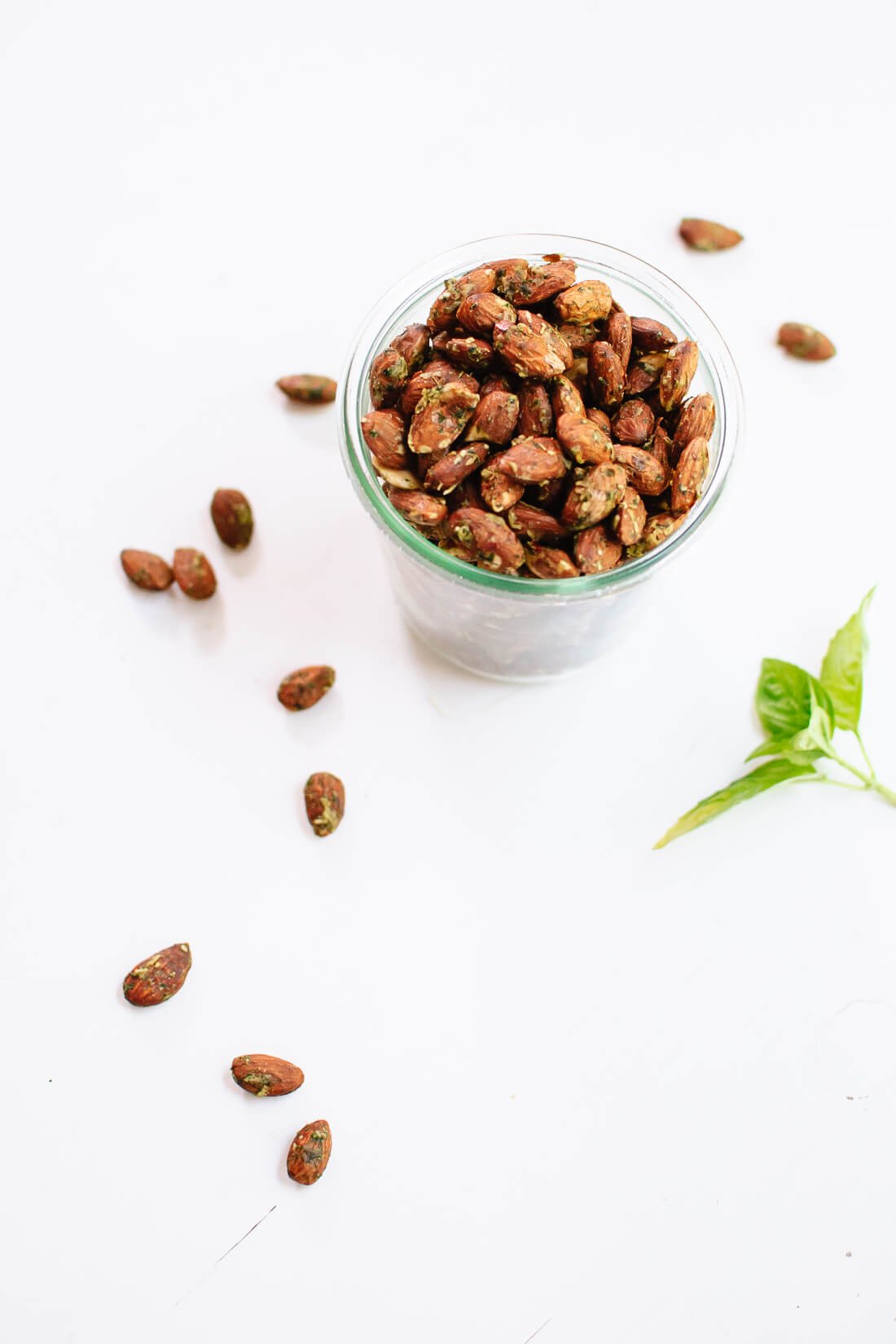I hope you all had crazy fun weekends to make up my totally tame past couple of days. Please, tell me stories about late nights and bottomless brunch mimosas so that I may live vicariously through you. As for me? I stared at this screen a lot and cleaned, mostly. I bathed my puppy dog (Cookie wants you to know that she is so fresh and so clean clean), moisturized my handbags (you guys, it’s like I got brand new purses) and finally, cleaned off my camera lens and viewfinder. I can see!!! All hail the transformative power of cleaning. Please don’t tell my mother I just said that.
I hadn’t cleaned my lens since, ah, I don’t even remember, but definitely not since I toured a dusty almond orchard last month. The Almond Board of California invited a group of dietitians and bloggers out to visit the Sacramento area and learn about almonds. To clarify, they covered our expenses, but I’m not sharing the experience out of obligation—I genuinely thought it was interesting and thought you might, too.
It was a whirlwind trip and I was only there for one full day. On that day, we woke up early for a group yoga session before breakfast, followed by what I can only call, “Almond School,” which lasted from 9 am to 3 pm. My main takeaway? Almonds are good for you. But you know that. We snacked on almonds as we learned about the satiating effect of almonds—which is certainly true, because I ate so many almonds that I wasn’t hungry for lunch. I realized that snacking is BIG business and that all the different food industries are fighting over pieces of the pie. Did you know that Americans now eat, on average, 2.3 snacks per day? And we make 4.4 snack food/beverage choices snacking occurrence. Snack, snack, snackity snack.
Some other fun facts from my notes: Almond trees actually start out as peach trees, then almonds are grafted onto the trunk and the tree grows into an almond tree. (Almonds and peaches are botanically related, which is also why they taste so good together.) Fuzzy, green baby almonds are called nutlets! They’re pickled and served as a delicacy elsewhere in the world. One hundred percent of U.S. grown almonds are grown in California, so I’m still wondering why the Almond Board of California isn’t called the Almond Board of the United States. There are no genetically modified almonds. Seventy-two percent of California almond farms are family owned, with fifty-one percent owning fewer than 49 acres, so you’re often supporting family farms when you buy almonds. High five!
I found the section on global almond consumption and subsequent almond marketing efforts totally fascinating. For instance, most European almond consumption comes in the form of desserts. In contrast, in India, almonds are sold in their shells. Indian mothers like to offer their children several almonds per day in a display of motherly love, treating them almost like vitamins. The Japanese pay a premium for smooth skinned, flawless almonds, which are a far cry from the almonds I bought at Trader Joe’s. This American doesn’t mind the nicks, though—they all taste the same to me.
Naturally, they offered us a variety of almonds to snack on during school. We all ate a lot of almonds that day, and we all went, “Woah,” when we tasted these basil pesto-covered snacking almonds. They’re crunchy, savory, herbaceous and utterly irresistible. They aren’t the prettiest of appetizers, but I’m confident they would be a big hit at your next party nonetheless. I just couldn’t keep them to myself. For the record, I tried to make a vegan version with olive oil instead of egg whites and nutritional yeast instead of Parmesan, but they just didn’t work. The egg whites are essential here—they basically glue the blended basil to the nuts. Any ideas on vegan binders that might do the trick?

